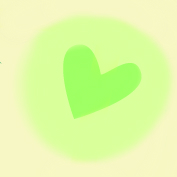Uttanasana: To Bend the Knees or to Not Bend the Knees?
The image to the left shows three versions of Uttanasana: 1) with bent knees, 2) with a microbend in knee and 3) with straight legs and a rounded back. It indicates that #1 is the best version of this pose.
This is only partly true.
It is true that you want to bend at the hips, lengthen your spine, and release the neck. It is also true that you want to straighten your knees.
When you bend your knees in Uttanasana, the hamstrings become slack, which relocates the stretch to your low back. Stretching the low back can be problematic. For many people, the low back is weak (sit much?). Stretching a weak muscle leads to greater weakness and instability.
The hamstrings are comprised of three muscles: the semimembranosus, semitendinosus, and biceps femoris. Each of these three muscles originate at the sit bones, travel along the back of your thigh, and insert below the knee on the shin bones.
Photo credit: The Daily Bandha
To stretch the hamstrings, it is important to:
- bend at the hips, not the lumbar spine (lower back)
- tilt the pelvis forward
- engage the quadriceps (muscles on the front of your thighs)
- lengthen the muscle in two directions (shown by the arrows in the image to the right)
In class, you may hear some of the following cues in Uttanasana:
- Align your hips over your ankles by bringing more weight into your toe mounds
- Press the feet down into the floor and lift the knee caps to engage the quadriceps
- Open the back of the knees by reaching up towards your sit bones and down towards your heels
- Deepen the crease of your thighs and lengthen along the front of your torso
- Release your head and neck
So what if you have really tight hamstrings? When your hamstrings are tight, the tight muscles pull the sit bones down. This tilts the pelvis back and down, placing undue strain (and pain) on your low back. Rather than bending your knees, work gradually to lengthen the hamstrings before going into the full pose. Here’s how:
Start on your back. Stretching your hamstrings on your back, as in Reclined Hand to Foot Pose keeps your back safe while you work to lengthen your hamstrings.
Place your hands on the wall. Working in Uttanasana with your hands on the wall keeps the back neutral while giving you space to tilt the pelvis forward while lengthening your hamstrings. Photo credit: Foodadtit.com
Place your hands on the seat of a chair. Once you begin to increase the length of your hamstrings, start to work your hands closer to the floor to continue lengthening your hamstrings.
Spread your feet 6-12 inches apart. Having your feet wide gives your pelvis more room to tilt forward.
Place your hands on blocks. Here we are moving deeper into the pose as the hamstrings become more flexible.
Use your breath and be patient. Lengthening a muscle takes time and patience! If you go too deep too fast, you may trigger your stretch reflex, which causes the hamstrings to contract rather than stretch.
As with every rule, there are exceptions:
- Knee Hyperextension - If you have a tendency to hyperextend your knees, it is helpful to practice Uttanasana with a small, microbend in the knees to prevent further wear and tear on the ligaments in your knees. Work to find a lifting action in your knees to engage your quads.
- Herniated Disc, Osteoporosis, Scoliosis – While it is safe to practice Uttanasana with a flat-back, neutral spine, deep forward folds are to be avoided with these conditions.
- ALWAYS bend the knees when you are bending over to pick something up off the floor.
Uttanasana is a powerful pose that tones the legs, stimulates digestion, and relieves stress. Forwards folds bring our focus inward, which has a calming effect on the brain. When we practice poses with musculoskeletal alignment we reap all the benefits of the pose in a safe and effective manner.
References:
Long, R. The Daily Bandha. www.dailybandha.com
Iyengar, B.K.S. Light on Yoga.






